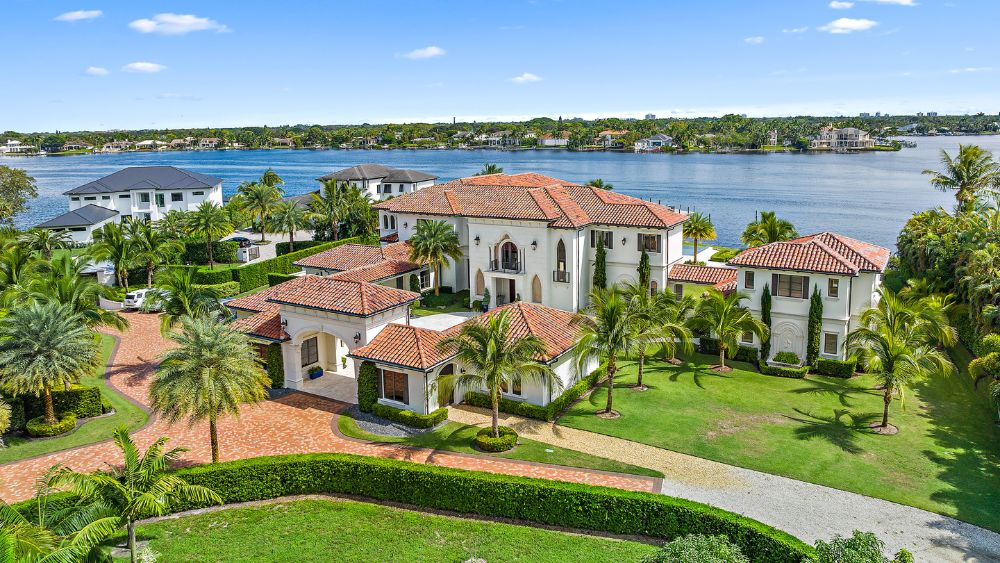Florida, known for its stunning beaches and vibrant culture, offers a unique blend of coastal architecture styles that captivate luxury travelers. From elegant beachfront villas to charming seaside cottages, Florida’s coastal architecture is a testament to its rich history and natural beauty. In this article, we will explore the various coastal architecture styles in Florida and what makes them so appealing to those seeking a luxurious lifestyle.

The Allure of Florida’s Coastal Architecture
The coastal architecture styles in Florida are as diverse as the state’s landscape itself. Whether you are drawn to the classic charm of Key West cottages or the modern elegance of Miami’s beachfront properties, Florida offers something for every discerning taste. Let’s delve into the different architectural styles that define Florida’s coastline.
Key West Style: A Tropical Paradise
The Key West style is synonymous with relaxed tropical living. Characterized by pastel-colored exteriors, wraparound porches, and louvered shutters, these homes exude a laid-back charm that is perfect for enjoying the Florida sunshine. The architecture often incorporates local materials like coral rock and cedar, blending seamlessly with the island’s natural surroundings.
Miami Modern: Sleek and Sophisticated
For those who prefer a more contemporary look, Miami’s modern architecture offers sleek lines, glass facades, and minimalist designs. These homes often feature open floor plans, high ceilings, and expansive windows that provide breathtaking views of the ocean. The integration of indoor and outdoor living spaces is a hallmark of this style, making it ideal for entertaining and enjoying the coastal breeze.
Coastal Mediterranean: Timeless Elegance
The Coastal Mediterranean style draws inspiration from the villas of Italy and Spain. With their stucco exteriors, red-tiled roofs, and wrought-iron details, these homes exude a timeless elegance. Arched doorways, courtyards, and lush gardens add to the romantic ambiance, creating a luxurious retreat for homeowners.
Influences and Elements of Florida’s Coastal Architecture
Florida’s coastal architecture is heavily influenced by its climate, geography, and cultural history. The state’s weather conditions dictate the use of certain building materials and design elements to withstand hurricanes and tropical storms. As a result, many homes incorporate features like elevated foundations, impact-resistant windows, and durable roofing materials.
Sustainable Design: Embracing Eco-Friendly Practices
With a growing emphasis on sustainability, many architects in Florida are incorporating eco-friendly practices into their designs. This includes the use of renewable materials, energy-efficient systems, and rainwater harvesting. By integrating sustainable elements, homeowners can reduce their environmental footprint while enjoying the beauty of coastal living.
Outdoor Living Spaces: Blending Nature and Luxury
One of the defining characteristics of Florida’s coastal architecture is the seamless integration of indoor and outdoor living spaces. Expansive patios, rooftop terraces, and infinity pools are common features that allow residents to enjoy the stunning views and warm climate. These outdoor spaces are often adorned with lush landscaping and comfortable seating areas, creating an oasis of relaxation.
Exploring Florida’s Coastal Towns
Florida’s coastal towns offer a variety of architectural styles, each with its own unique charm. From the historic streets of St. Augustine to the vibrant art deco district of Miami Beach, there is no shortage of picturesque locations to explore. Whether you are looking for a tranquil retreat or a bustling urban environment, Florida’s coastal towns have something to offer every luxury traveler.
St. Augustine: A Glimpse into the Past
As the oldest city in the United States, St. Augustine boasts a rich history and a diverse architectural landscape. The city’s Spanish colonial buildings, cobblestone streets, and historic landmarks provide a glimpse into the past. Visitors can explore the charming neighborhoods and admire the well-preserved architecture that tells the story of Florida’s early settlers.
Miami Beach: Art Deco Delights
Miami Beach is renowned for its vibrant art deco district, characterized by colorful buildings, geometric patterns, and neon lights. This architectural style, popular in the 1930s and 1940s, adds a playful and glamorous touch to the city’s skyline. Strolling along Ocean Drive, visitors can admire the iconic architecture and experience the lively atmosphere of this world-famous destination.
Conclusion
Florida’s coastal architecture styles offer a captivating blend of history, culture, and natural beauty. Whether you are drawn to the tropical charm of Key West or the modern elegance of Miami, Florida’s coastal homes provide a luxurious retreat for those seeking a unique lifestyle. By embracing sustainable design practices and creating seamless indoor-outdoor living spaces, Florida’s architects continue to redefine coastal living for the modern era. For more information, you can visit small Florida beach towns.

Frequently Asked Questions
What are the key features of coastal architecture in Florida?
Coastal architecture in Florida often includes features like impact-resistant windows, elevated foundations, and open floor plans that maximize natural light and views. These homes also incorporate outdoor living spaces and sustainable design elements.
Which coastal town in Florida is known for its art deco architecture?
Miami Beach is renowned for its art deco architecture, featuring colorful buildings, geometric patterns, and a vibrant atmosphere.
How does Florida’s climate influence its coastal architecture?
Florida’s climate, characterized by hurricanes and tropical storms, influences the use of durable building materials and design elements that can withstand harsh weather conditions.
This article contains affiliate links. We may earn a commission at no extra cost to you.

